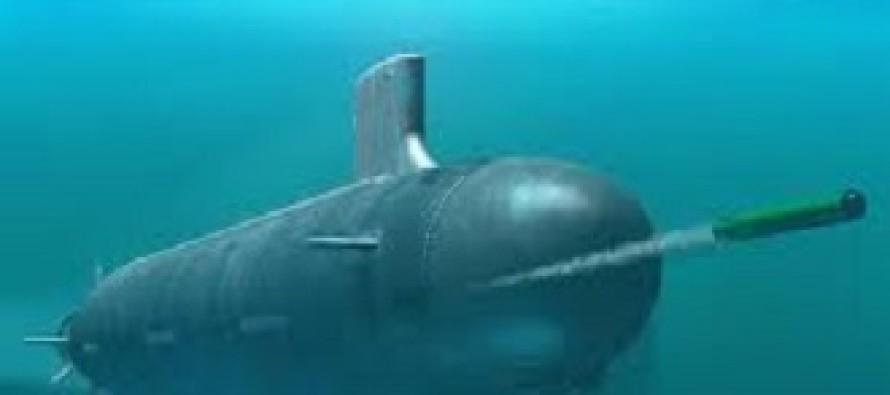Bangladesh’s acquisition of Chinese submarines: No cause for India to worry

Bangladesh is not only a riverine but also a maritime country. It was the ocean route that in the past led many foreigners to come to Bengal (now greater part of Bangladesh) and Chittagong port was the conduit for interaction between Bengalis and foreigners including European colonisers.
Today’s Bangladesh, as an independent and sovereign nation, needs to address both military and non-military maritime security threats in its jurisdiction in the Bay of Bengal.
Reportedly Bangladesh and China signed an agreement in last December to buy two “Ming” class submarines at the cost $230 million to protect its maritime areas in the Bay of Bengal and there is nothing unusual about acquiring submarines to protect the maritime areas.
Since 2010, the government has taken firm steps in gradually building Bangladesh Navy as a deterrent force and the acquisition of submarines is a part of the plan to defend its off-shore areas. Bangladesh also acquired a warship from the US coastguard which is believed to be the biggest Bangladesh has ever commissioned as yet by the name “Sumdra Bijoy” (Victory of the Ocean).
Following the verdict of ITLOS in March 2012 on the maritime boundary between Bangladesh and Myanmar, a very large areas of living and non-living marine resources of east of the Bay of Bengal have come under its jurisdiction including the 200-mle exclusive economic zone and outer continental shelf. So in light of this, it was necessary to upgrade Bangladesh’s naval facilities.
The arbitration case between Bangladesh and India on the dispute on maritime boundary in the western part of Bay of Bengal was heard this January by the Arbitral Tribunal at The Hague from both parties and hopefully the verdict, expected to be delivered by June 2014, has possibilities to be in favour of Bangladesh, adding more maritime areas under its jurisdiction.
Exploitation of coastal and off-shore areas includes seafloor mining, deepwater drilling and exploration of oil and gas. There is a full-blown new revolution of technology to exploit marine resources at any depth.
Besides the traditional non-living resources (oil and gas) numerous forms of life live in the sea which could become one of the potential resources of food and the sea could be one of the renewable sources of energy (tidal waves) in future. Scientists say that sea resources are more than those of the land and as land resources deplete and the population increases, the country will depend on its sea resources.
It is noted 90% of GNP depends on sea trade and commerce and almost 100% of Bangladesh’s energy requirement in terms of fuel arrives by sea from the Middle East and therefore non-military threats, such as piracy, human and drug trafficking, gun running and oil spill on the sea areas of Bangladesh need be adequately addressed.
The two sea lines of communication connected with two sea ports at Chittagong and Mongla act as vital trade links. Thereby any sort of disruption to the sea lanes will have a disastrous effect.
It is reported that India felt unease about Bangladesh’s deal for submarines with China and sought clarification from China on the necessity of supplying submarines to Bangladesh.
Although India does not perceive a threat from the acquisition of submarines by Bangladesh, some analysts think that India is worried with Chinese increasing influence on Bangladesh and turning Chittagong port similar to “Gwadar port” of Pakistan.
Gwadar, being built in Baluchistan coast, is only 180 nautical miles from the exit of the Straits of Hormuz and the port will be run by China. India thinks that both Pakistan and China will take control over the world energy jugular and may interdict Indian tankers, if necessary.
This apprehension emanates from Indian perception that China has been gradually encircling India by the so-called “String of Pearls”. The term “pearls” meant naval facilities China reportedly has been developing in Sri Lanka, Myanmar, Thailand and Cambodia.
In Myanmar alone, they include ports such as Sittwe, Coco, Hianggyi, Khaukphyu, Mergui and Zadetkyi Kyun. China moved into India’s backyard when it signed an agreement with Sri Lanka in March 2007 to develop Hambantota Development Zone, which includes a container port, a bunkering system, an oil refinery, an airport and other facilities. It is expected to cost about US$1 billion and the Chinese are said to be financing more than 85% of the project. The entire project is scheduled to be completed in the next 8 years.
The Chinese role in the Hambantota project is not just about influence in Sri Lanka, it is about China’s presence close to Indian shores, which has implications for India’s security. India sees Sri Lanka as a sentinel of its security astride the Indian Ocean. .
Given the above geo-political background, India appears to be worried that Chittagong port may be added in future among the “string of pearls” of China.
India should not worry as Bangladesh maintains cooperative interactions with both nations—India and China and the relations with each nation are not at the expense of the other. Bangladesh is pursuing a mature foreign policy of what may be labelled as “more friends, fewer enemies.” So it could be said that there is little for India to worry.


